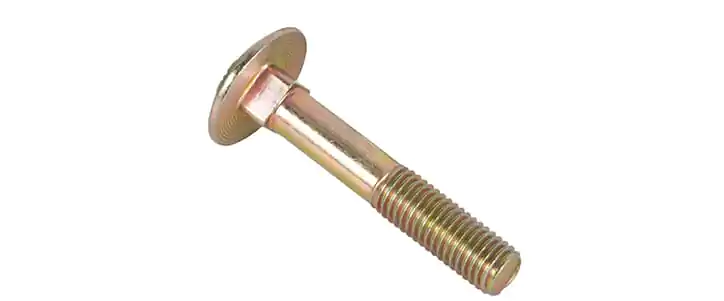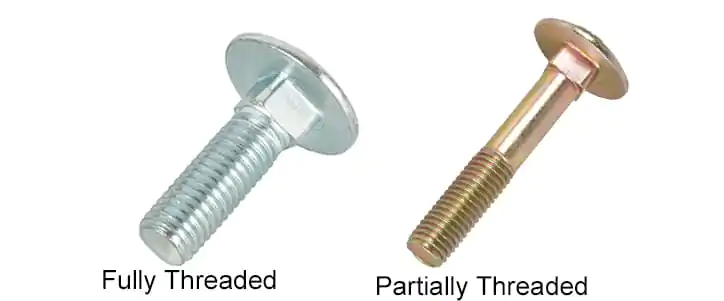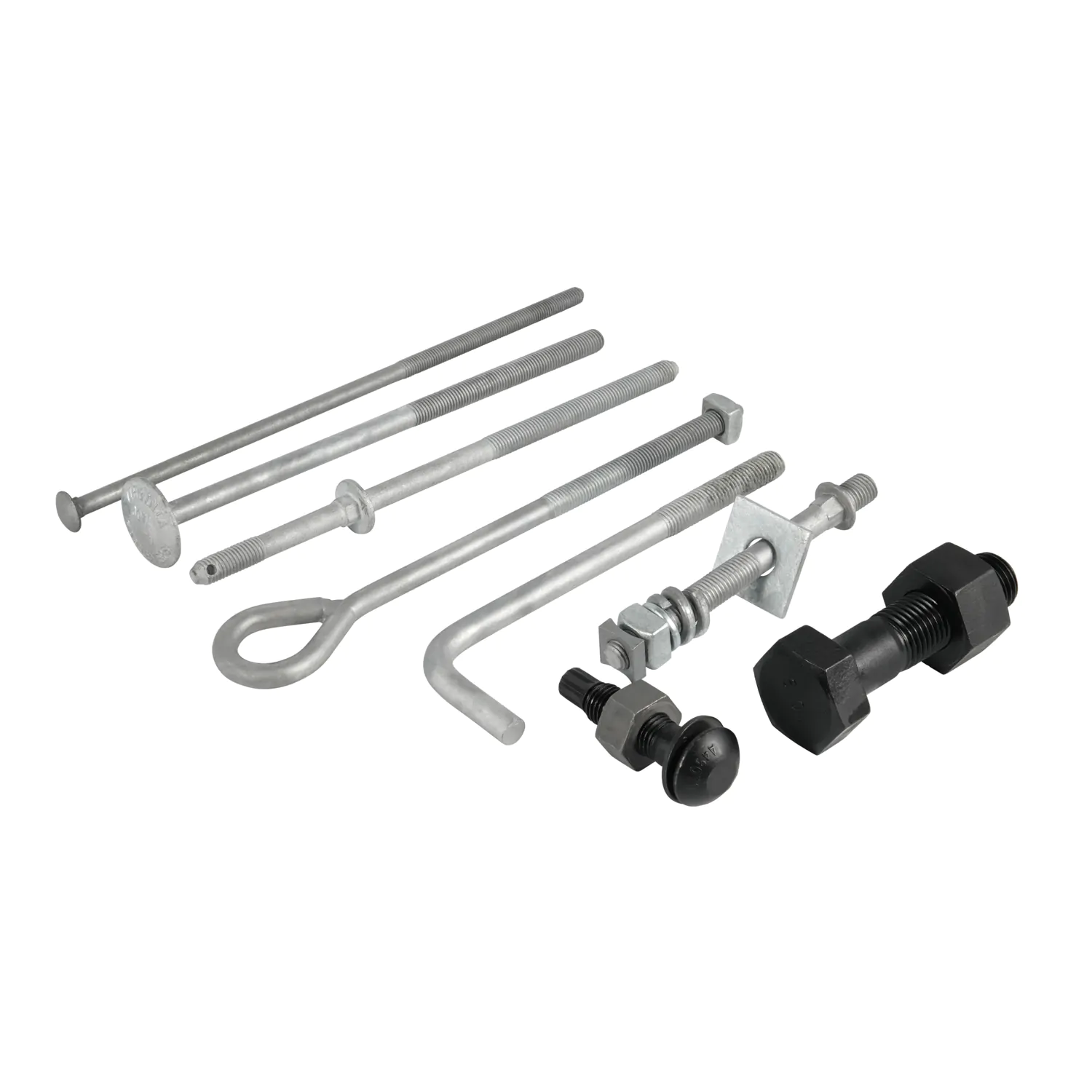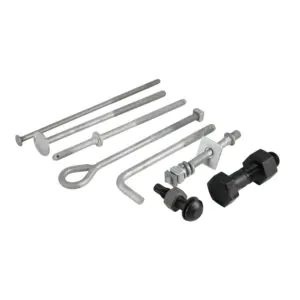Are you tired of looking at fasteners and thinking they all look the same? Well, let me introduce you to the carriage bolt, a true champion in the world of fasteners. Stick around, and you’ll see why this bolt is a game-changer!
**Carriage bolts are primarily used for:
- Attach wood to wood or wood to metal, especially in construction and woodworking projects like decks, fences, and outdoor structures.
- Furniture assembly, due to their clean appearance and secure fastening.
- Playground equipment, where the smooth head reduces injury risk.
- Security applications, such as locks and hinges, where the bolt needs to be removable from only one side.
- Various industries including water conservation, railroads, farming, and mining
To install a carriage bolt, you usually need to drill a hole, put in the bolt and get a nut and a washer on the back side to keep it all together. The square side on the shaft grabs the material so you can put the tightness to it from the nut end using just one wrench.
Now that we’ve covered the basics, let’s dive deeper into the fascinating world of carriage bolts!
Carriage Bolts: What Exactly Are They?
A carriage bolt, also known as a coach bolt or round-head square-neck bolt, is a type of fastener with distinct characteristics. It has a smooth, shallow domed or mushroom-shaped head. The shank has a square cross-section immediately beneath the head, which becomes circular for the rest of its length. The square portion of the shank allows the bolt to be self-locking when inserted into a square hole, preventing rotation during installation.

The Origin of the Name “Carriage Bolt“
Carriage bolts are called that because of their original purpose and historical use. Here’s why:
- Original Purpose: Carriage bolts were first invented and used in the early 1800s for the construction of carriages and carriage wheels.
- Inventor: They were developed in 1818 by Micah Rugg, a blacksmith from Connecticut.
- Carriage Construction: These bolts were essential components in building various modes of transportation, particularly horse-drawn carriages.
- Design Features: The unique design of carriage bolts, with their smooth domed head and square neck, made them ideal for use in carriage assembly, allowing for a flush finish and preventing rotation when tightened.
- Historical Context: The term “carriage bolt” reflects the era of horse-drawn transportation when carriages were a common mode of travel for the upper classes.

So, the name “carriage bolt” directly stems from their original application in carriage construction during the 19th century. Even though their use has expanded to many other areas since then, the name has persisted as a reminder of their historical origins.
Are Carriage Bolts Fully Threaded?
Carriage bolts are not always fully threaded. The threading on a carriage bolt can vary depending on the specific type and intended application. Here are the key points regarding the threading of carriage bolts:
- Fully Threaded Carriage Bolts: Some carriage bolts are fully threaded along their entire length. This type of threading allows for greater versatility in applications where the bolt needs to be adjusted or where a strong, secure hold is required throughout the entire length of the bolt.
- Partially Threaded Carriage Bolts: Other carriage bolts may only be partially threaded, with the threading extending from the end of the bolt up to a certain point, leaving a portion of the shank unthreaded. This design is often used in applications where the bolt needs to pass through thicker materials or where the unthreaded portion provides additional shear strength.

The choice between fully threaded and partially threaded carriage bolts depends on the specific requirements of the project, including the materials being fastened and the desired strength and adjustability of the connection.
Why Are Carriage Bolts Ideal for Wood-to-Metal Connections?
Carriage bolts are often considered ideal for wood-to-metal connections due to several key characteristics:
- Finished appearance: The smooth rounded head of carriage bolts gives a nice-looking, finished appearance, especially in furniture where the bolt may be sticking out
- Secure attachment: The square neck beneath the head keeps the bolt from turning when you tighten it down so it can’t get loose
- Easy to use: You can put a carriage bolt in from one side, which is nice when you’re in a tight spot or don’t have an extra hand to help
- Different types: They can go into wood, metal, or other metal-to-metal assemblies you might have in your furniture
- Strength: Carriage bolts are good for shear strength, helping to hold your pieces of furniture together when things will be moving and getting used a lot
- Less tampering: Once you get the bolt in, it’s tough to get out because it will be smooth on the head side. For the furniture, it will be difficult to pop out without reaching the other side for the nut
- Different finishes: You can get the carriage bolt in different finishes—like brass, black oxide, or galvanized—to make them blend in with your furniture
- Better on the wood: The smooth, rounded head typically won’t allow the wood to crack or split out like other fasteners can

These features make carriage bolts particularly well-suited for securely joining wood to metal while maintaining an attractive appearance and providing ease of installation.
Should Carriage Bolts Be Used with Washers?
Carriage bolts do not always require washers, but their use can be beneficial depending on the specific application and materials involved. Here are some key points regarding the use of washers with carriage bolts:
- Material Protection: Washers can help distribute the load more evenly, protecting the material being fastened from damage, especially when dealing with softer or thinner materials.
- Stability and Security: Using washers can enhance the stability and security of the connection by preventing the nut from loosening over time due to vibrations or other forces.
- Installation Considerations: When installing carriage bolts, if the material is thick enough to prevent pull-through, washers may not be necessary. However, for added security and to prevent damage, washers are often recommended.
- Alternatives: In some cases, alternatives like threaded inserts or reinforcing plates can be used instead of washers to achieve similar benefits in terms of load distribution and material protection.
- Common Practices: While washers are commonly used with carriage bolts, they are not mandatory. The decision to use them should be based on the specific requirements of the project and the materials being fastened.

Conclusion
Carriage bolts are used in many assemblies and projects all across the board because of how they are made and what they can be used for. Whether it’s wood cabinets you’re putting together, an outdoor structure you’re building, or a piece of machinery (automotive or something agricultural), they all use carriage bolts and they look good. It doesn’t matter if the carriage bolt is threaded with no threads, with a washer inserted, or no washer at all, each time you use them, they are always going to maintain a very solid and secure hold for you.
If you want to get more information on how the carriage bolt can be adapted to your specific need or you want to put in an order, then get a hold of us over at Shanghai Hengrui Industry Co., Ltd. assisting you with high-quality fasteners for the needs of your professional or home assembly tasks.
For further reading and resources, check out our website or contact us directly at info@hrfastener.com.







